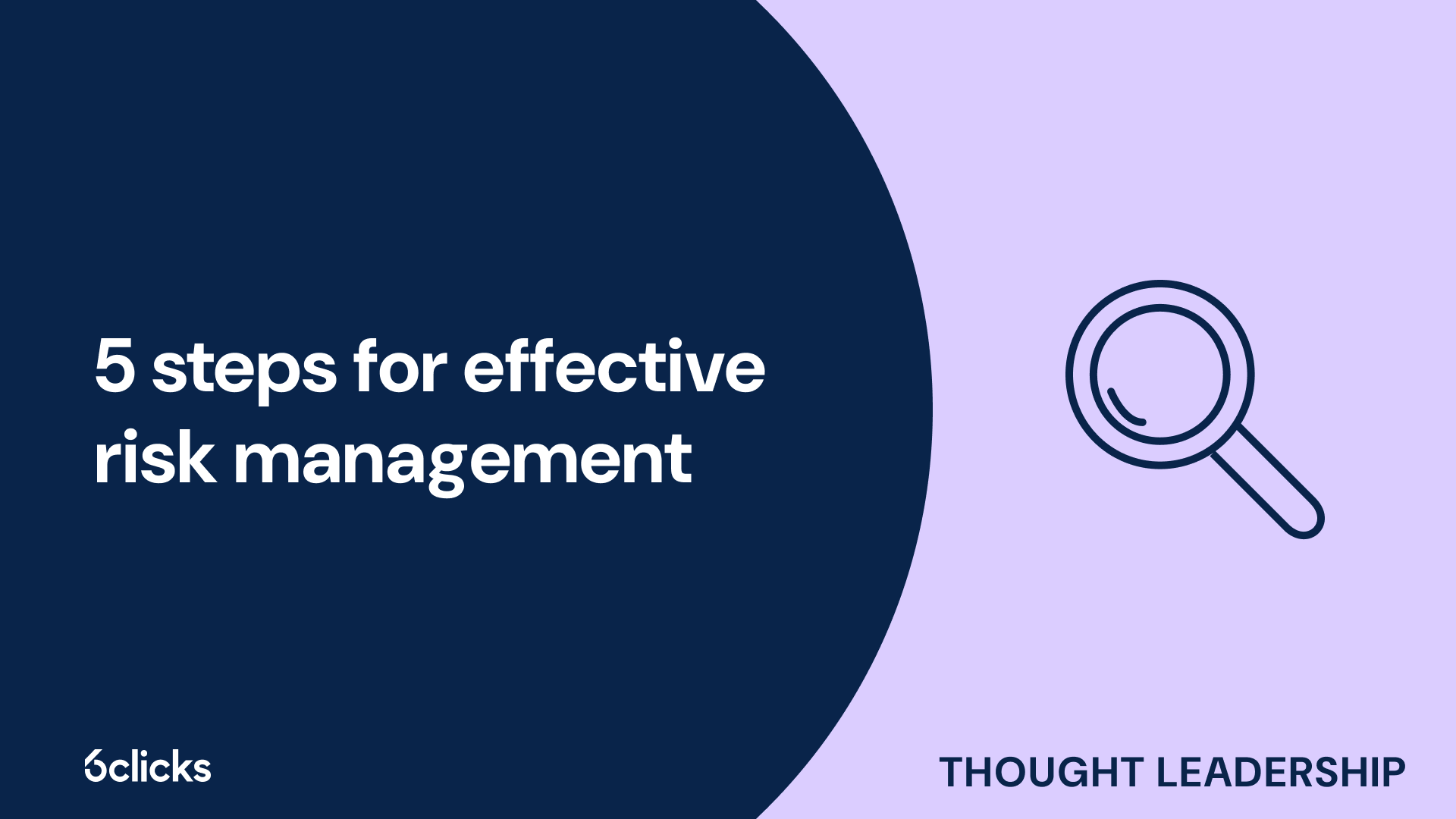
Whether you’re planning a new project or looking to enhance your organization’s security program, implementing risk management is crucial in ensuring that you achieve your objectives and that your organization remains resilient in the face of diverse threats. In this article, we will tackle the essential steps of the risk management process, why organizations should develop a risk management strategy, and the best practices for managing risks. Learn more below:
What are the 5 steps in the risk management process?
Risk management is referred to as a process for it involves continuously identifying, treating, and managing risks. While risk management focuses on preventing or reducing the likelihood and impact of potentially unfavorable outcomes or “negative risks,” it also deals with identifying and maximizing opportunities or “positive risks” that can benefit the organization. Here are the steps you need to take to effectively manage risks:
1. Identify risks
The first step is to identify the risks that are relevant to your organization. Multiple factors, including your organization’s size, structure, industry, location, assets, and stakeholders, determine the risks that could significantly impact your organization. There are also different types of risks that you should consider, such as operational risks that can affect day-to-day processes and systems, financial risks that relate to assets and liabilities, compliance risks that involve your legal and regulatory obligations, cybersecurity risks, and environmental risks among others.
Start by listing out all potential risks and possible issues that may arise across different aspects of your organization. Arrange them based on the level of detail, with high-level risks on top of more specific risks. To help you fast-track this step, you can use 6clicks’ pre-built risk libraries which span various domains such as cybersecurity, project management, occupational health and safety, and more. 6clicks also has a built-in risk register that allows you to organize identified risks according to their hierarchy or connections through the risk relationships feature.

2. Analyze risks
Next, risks must be analyzed in order to determine the most critical ones that the organization needs to prioritize. This requires performing a risk assessment, in which the perceived impact and the probability of occurrence of each risk are measured to produce a risk rating. The 6clicks platform enables you to streamline risk assessments using its powerful risk register with custom fields that you can tailor to your existing organizational processes.
On the 6clicks risk registers, you can define risk assessment fields such as likelihood and impact and set the values for measurement (e.g., 1 for the lowest and 5 for the highest). You can then rate the likelihood and impact of a risk, and the system will automatically calculate its overall risk rating. To help you visualize how risk ratings are calculated, 6clicks provides other tools for risk assessment, such as the risk matrix, which plots the likelihood and impact of risks on a two-dimensional grid represented by the x and y axes.
For example, if a risk’s likelihood is ranked 5 or very likely and its impact has a score of 3 (major), then it will have a risk rating of 4 on the risk matrix, making it a high-priority risk:

3. Prioritize risks
Based on the severity of risks, the organization can proceed to initiate prioritization for those with high risk ratings. This means allocating budgets, teams, and other resources for risk management. The organization must also formulate risk decisions and define whether it will prevent, accept, transfer, or mitigate high-priority risks. On the 6clicks risk register, you can assign a treatment decision to risks and create risk treatment plans to avoid or reduce risks. Treatment decision options can also be customized according to your organization’s needs. In addition, 6clicks’ AI engine Hailey can provide insights into risk patterns and predict future trends to help you make more effective decisions.

4. Treat risks
Risk treatment plans are developed to eliminate or contain risks before they materialize as issues or incidents. They consist of detailed steps or a set of actions that the organization will take based on its decision to accept, prevent, transfer, or mitigate risks. For example, to mitigate the risk of unauthorized access to sensitive information, a risk treatment plan could include implementing security controls and procedures such as multi-factor authentication and conducting security training.
6clicks enables you to customize workflows to define the stages of risk treatment, create and outline tasks for your risk treatment plans, and assign them to team members. With 6clicks’ task management feature, you can easily track the progress of risk treatment plans and enhance visibility into all risk management activities.

5. Monitor risks
Finally, to complete the process as well as continue the cycle of identifying and addressing risks, organizations must put monitoring systems in place to proactively manage risks. As an organization grows, its risks also multiply and evolve, making it crucial to monitor and repeatedly evaluate the likelihood and impact of risks. On the 6clicks platform, you can instantly generate reports on your risks to streamline risk oversight.
The organization also needs to periodically review and keep a close eye on risk mitigation measures to ensure that they are working adequately. Conducting regular security assessments and internal audits allows you to verify the effectiveness of risk management procedures and security controls so you can make improvements as needed. With 6clicks, you can utilize integrated audit & assessment functionality and automated control testing to implement robust monitoring and validation of your risk mitigation measures.
In summary, identifying, assessing, prioritizing, remediating, and monitoring risks are essential components of an effective risk management process.
Why is risk management important?
With today’s complex business landscape, it is vital for an organization to establish a risk management process for it helps prevent or lessen the likelihood of issues and security incidents from occurring. This saves your organization from potential financial losses and spares you substantial time, effort, and resources on damage control.
Through risk management, organizations can safeguard valuable data and assets, preserve critical services and systems amidst disruptions, and maintain a strong security posture. From cyberattacks to natural disasters, risk management offers a comprehensive approach to improving your organization’s security and business continuity.
Moreover, risk management promotes compliance with jurisdictional laws, industry standards, and other regulatory requirements, demonstrating your organization’s credibility and increasing customer trust.
Best practices for risk management
Here are some best practices to guide you in developing a robust risk management strategy:
- Adopt a risk management framework: Using established risk management frameworks can provide structure to your risk management strategy and facilitate regulatory compliance.
- Involve all stakeholders: Board members and senior leadership should take the lead in risk management initiatives and involve key stakeholders such as vendors and service providers, line managers, and security teams.
- Communicate risk information: Make sure that risk management policies and procedures are clearly communicated across the entire organization and that relevant teams are well-informed of the status of risk management activities.
- Foster a culture of risk awareness: Undergoing frequent audits and establishing employee training and education programs are some of the ways to build a culture of security preparedness within your organization.
- Leverage cutting-edge technology: AI-powered cyber GRC platforms such as 6clicks allow you to streamline risk management by automating various processes including risk and issue remediation, compliance mapping, and assessments.
Simplify risk management with 6clicks
From comprehensive risk identification to rigorous monitoring, 6clicks provides a holistic solution to risk management, empowering organizations to effectively address risks and stay secure. Learn more about the 6clicks platform by consulting with a 6clicks expert below:


